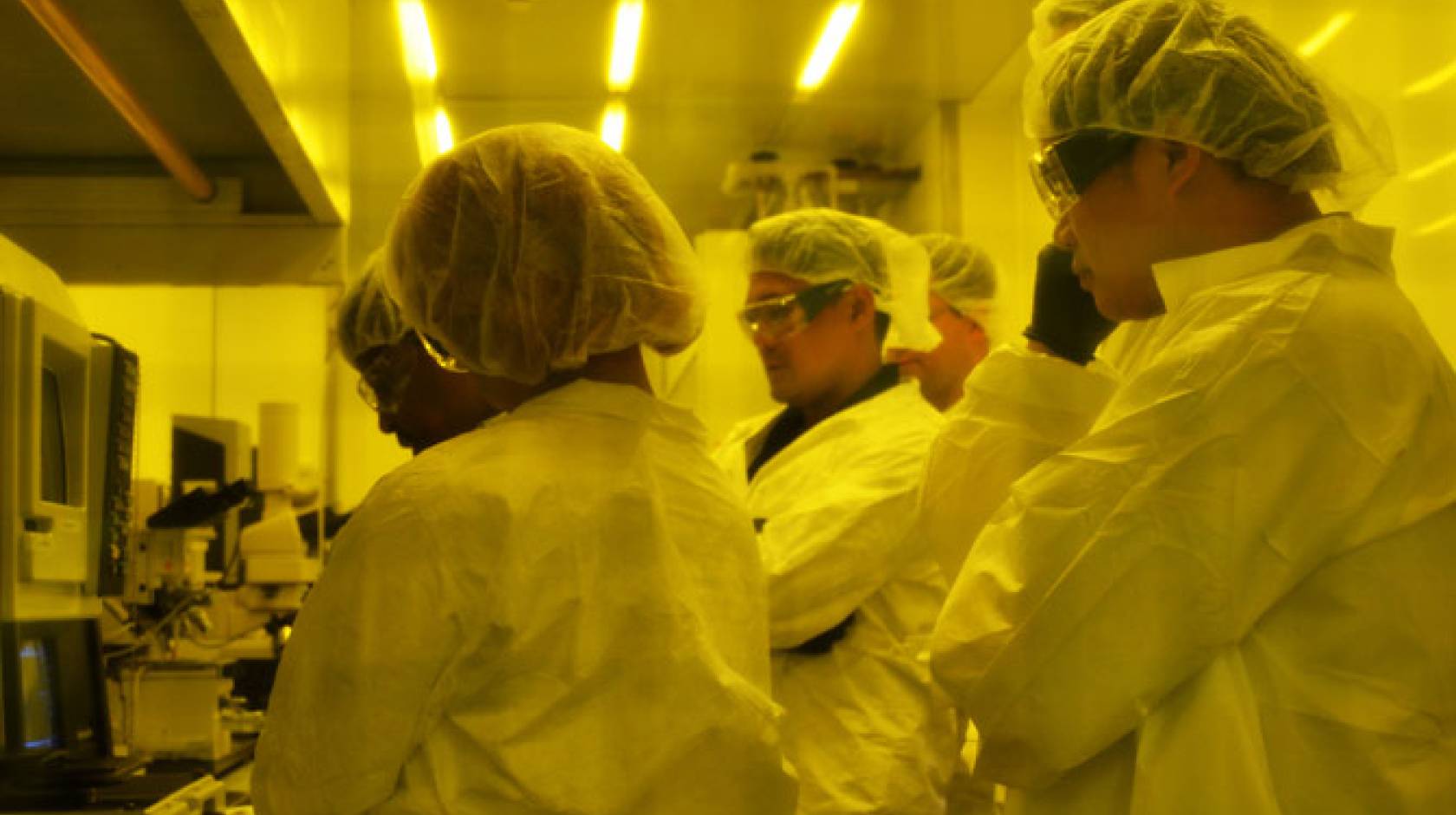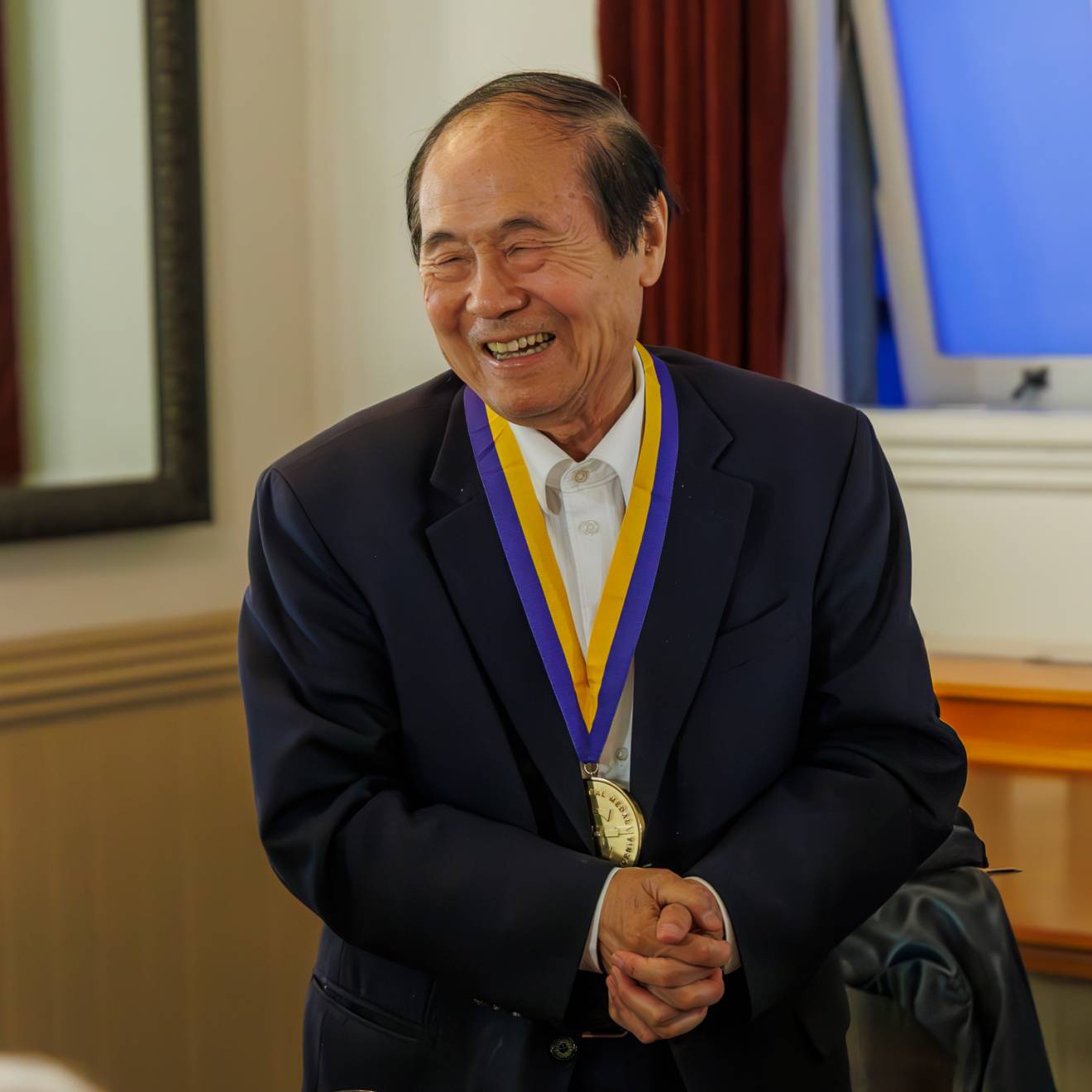Roibín Ó hÉochaidh, UC Berkeley

For many young college grads short on relevant work experience, translating a newly minted degree into that first career-track job can present a challenging proposition. For mid-career workers seeking to transition from unemployment to a new industry, getting a foot in the door without the right mix of experience can prove similarly confounding.
Take 47-year-old Bill Valdez. The Redwood City resident has some 20 years experience as an equipment-maintenance technician and supervisor, including a seven-year stint at Solyndra that ended when the Fremont solar plant closed in August 2011.
“The solar and semi-conductor industries are up and down, and job interviews in other industries have been tough to come by since I was laid off,” says Valdez.
Valdez is one of a group of laid-off workers receiving practical training in microfabrication processes and techniques at UC Berkeley’s Biomolecular Nanotechnology Center as part of a five-month technical-education program offered through Laney College in Oakland — part of the Peralta Community College District.
“I felt this program would be a good opportunity for me to change gears and go in a different direction,” Valdez says. “I’ll be much more comfortable applying for positions that I wouldn’t have considered before because I didn’t have the necessary experience.”
The nanotechnology center is a core research facility of the California Institute for Quantitative Biosciences (QB3) focusing on the design and fabrication of the lab-on-a-chip microfluidic circuits and other nanoscale structures that underpin biomedical and bioengineering applications from drug development to blood screening.
Developed with funding from Alameda County’s Workforce Investment Board, the pilot program aims to leverage that expertise to upgrade workers’ skills, restore their confidence and enhance their job prospects as they look to re-enter the workforce in the growing high-tech field of medical-device manufacturing.
Prospective candidates must meet unemployment-eligibility requirements through California’s Employment Development Department and undergo a skills assessment as part of the screening process. Participants continue to receive unemployment benefits during the training program.
“On the back of this experience, these workers are able to walk into an interview and talk with absolute confidence about what they’ve learned how to do,” says center director Paul Lum. “That’s invaluable knowledge that can’t be faked.”
Eleven of the 16 workers who graduated from last year’s inaugural class landed jobs in the biomedical field with local companies, including Sunnyvale-based Intuitive Surgical, which manufactures the da Vinci robotic surgical system. One program graduate moved to Los Angeles while another chose to return to her role as a stay-at-home mother. It’s not clear if the other three found new jobs.
This year’s contingent of 14 workers — ranging in age from early 30s to mid-50s with backgrounds spanning electronics recycling to healthcare and data processing to customer service — got its first hands-on experience at the nanotechnology center in June during a daylong boot camp on lab fundamentals. The group also toured the research and fabrication facilities at Stanley Hall before undergoing a comprehensive safety orientation.
Anil Kumar, a 20-year veteran of the aerospace industry, signed up for the training program after being laid off in February.
“It’s challenging and scary to switch careers at this stage of life and easy to get discouraged when you’re out of work, but this program has given me a real shot in the arm,” says the 50-year-old father of three. “It’s been amazing to be able to come to Berkeley to learn new skills and I’ve been blown away by the people here.”
The program’s lab component, which is supervised by Lum, research scientist Erik Jensen and Laney faculty lead Naima Azgui, is designed to bring together the theoretical knowledge gained during five months of intensive classroom work at Laney.
Course lectures and workshops cover electronics, applied mathematics, materials science, and FDA regulations governing medical-device manufacturing. The classroom component also provides workers with a grounding in cleanroom procedures, laboratory techniques, industry-specific protocols and computer-aided design and analysis software in preparation for the practical training at Berkeley’s Biomolecular Nanotechnology Center.
Zelalem Habtamu, an equipment-maintenance technician who worked alongside Valdez at Solyndra, was part of the team that stayed on to dismantle the plant for auction after the firm’s high-profile collapse. With the end of the program fast approaching, the 43-year-old Foster City resident is upbeat about making a fresh start in a growth industry.
“The practical training in specialized fabrication processes we’re getting at Berkeley will give us enough experience to get us started in the field,” says Habtamu. “So I’m really optimistic about my future job prospects because my options will be much broader.”
Azgui, who has been teaching mathematics and physics at Peralta for more than a decade, is committed to building on the success of the short-term pilot program.
“I think everybody realizes that there is enormous potential for this type of technical-education program,” says Azgui. “The Bay Area is at the center of a biomedical-manufacturing sector that is doing really well, and we have all these highly skilled and motivated workers willing to train for new careers.”
The physicist and former Fulbright research fellow at UC Berkeley is now working closely with Peter Crabtree, dean of career and technical education at Laney, to develop her concept into a yearlong bioengineering certificate program tailored to technical and transfer students.
“The program doesn’t interfere with the research that’s going on here and it strikes me as a great way for Berkeley to give a little back to the community,” Lum says. “You don’t need to travel all the way to Africa to do public-service work because there are plenty of people right here in the Bay Area in need of a helping hand.”

